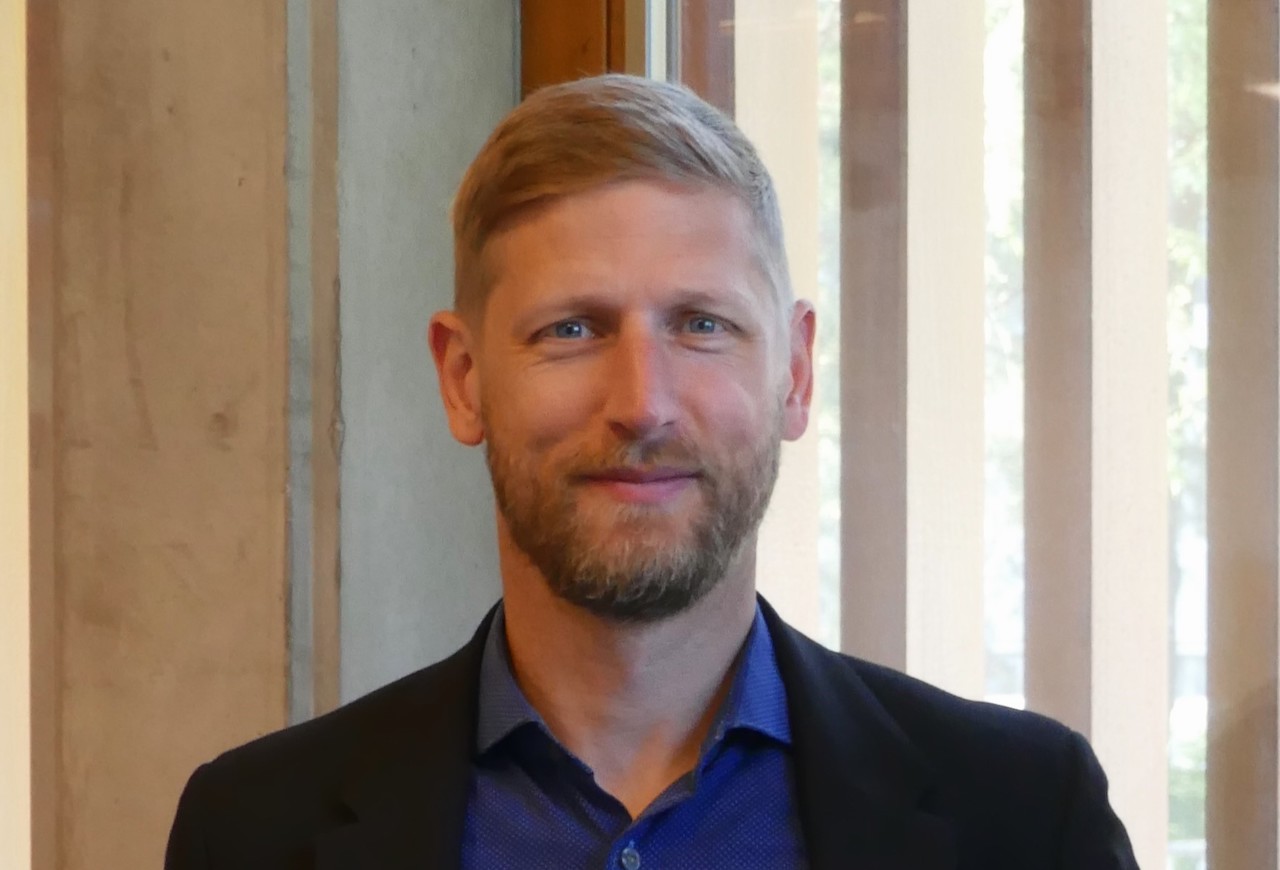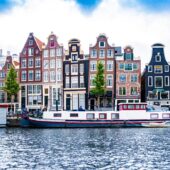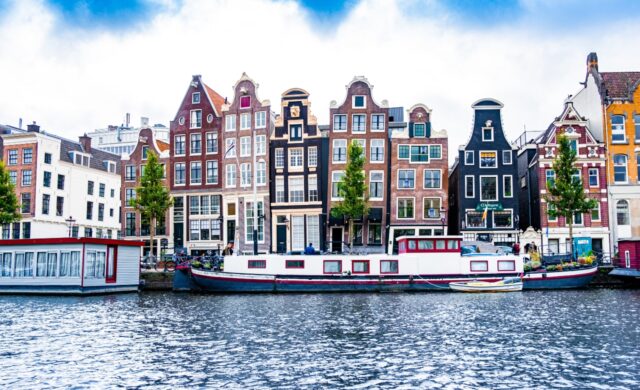The Restoration Seed Capital Facility, co-led by the UN Environment Programme, aims to unlock more private finance for the restoration and preservation of forests in developing countries by backing impact funds in the space.

In brief
- The Restoration Seed Capital Facility was launched in 2020 by the UN Environment Programme, the Frankfurt School of Finance and Management, and the governments of Germany and Luxembourg.
- It aims to scale up forest landscape restoration in developing countries (FLR) by facilitating the launch and further development of impact funds.
- FLR financing gap is large and more investment is needed. Collaboration with the private sector is key to success .
In 2020, the United Nations Environment Programme (UNEP), joined forces with the Frankfurt School of Finance and Management and the governments of Germany and Luxembourg to launch the Restoration Seed Capital Facility (RSCF).
The purpose of the facility, which will run until 2027, is to scale up forest landscape restoration (FLR) in the developing world by facilitating the launch of and further development of impact funds in the space.
Impact Investor caught up with Martin Halle, programme manager in the Climate Finance Unit at UNEP and manager of the facility, to find out more about how it all started and the progress being made.
With experience of running the Seed Capital Assistance Facility (SCAF), which co-finances the development of renewable energy projects, Halle says the team at UNEP saw an opportunity to do the same in the area of sustainable land use and forest restoration, which was experiencing similar struggles in securing private financing as clean energy had done a decade earlier.
“Five years ago, funds dedicated to this area were few and far between and the few that did exist were facing difficulties in deploying their capital. Having had success in helping to develop as well as launch new funds in the clean energy market, we decided to do the same in FLR,” he says.
Halle explains that the German government’s International Climate Initiative, which has a big focus on FLR, made it a great fit as funding partner and they received the go-ahead from the government to develop the facility together with co-investment from the Grand Duchy of Luxembourg. The Frankfurt School, which had lent its support to the SCAF, also joined the initiative as implementing partner.
Eligibility
To be eligible for RSCF support, impact fund managers or investment advisors must prove that at least 75% of their portfolio is dedicated to FLR in developing markets. This can include investments in activities such as agro-forestry, sustainable forest management, non-timber forest products, and the generation of carbon credits, among others.

“Thematically speaking, we are trying to drive investment towards the commercially viable land use models with a positive social and environmental impact that prevent degradation in the first place, and ideally, contribute positively in terms of restoration as well,” he says. “Any environmentally positive land use activity can be considered but the majority of projects tend to focus on agro-forestry and sustainable forest management, which have the biggest footprint in terms of land use.”
Halle says many developing countries are on the frontier of degradation and deforestation and projects in these regions have the potential to make the greatest impact.
“As a publicly funded initiative, we also need to focus on the additionality of our support. Investing in these countries is a lot more difficult, both in terms of finding the investors as well as the eligible opportunities, but the impact is also considerably greater and therein lies the focus of UNEP’s work, as well as the focus of the funding programmes of the initiative’s co-founders,” adds Halle.
Three support lines
The facility, which launched with a capitalisation of €21m, offers eligible applicants three lines of support. New fund managers can apply for a conditional grant to cover up to 50% of costs such as legal set-up costs, travel costs and marketing, up to a maximum of $750,000 (€700,000), with two further support lines dedicated to existing funds.
One of these offers a non-reimbursable grant to provide help in building a pipeline of early stage FLR aligned investment opportunities on a cost sharing basis, whilst the second provides a conditional grant, offering project specific co-financing to bring identified FLR projects to financial close, with the aim of de-risking the project development phase.
“One of the biggest challenges facing funds in FLR is to get to closing and reach the implementation phase, but finding viable opportunities on the ground is also very challenging,” says Halle who explains that there are very few commercially viable opportunities mature enough for investors to simply plug into.
“Typically, FLR focused fund managers have to be very skilled at identifying very early-stage opportunities, developing them to the point where they can be invested in, before implementing them throughout the cycle until exit,” he says. “This can be quite a capital and time intensive process, which is why we are here to help scale these opportunities which would otherwise present a real bottleneck, especially for smaller fund managers.”
The scale of the challenge
Halle explains that much of the land and forest degradation we see today is caused by productive land use.
“Unfortunately, we continue to live in a food and agricultural system that doesn’t reward doing things in the right way. It’s still often cheaper and more profitable to continue with traditional agricultural and forestry methods despite the negative impacts on the environment,” says Halle, who adds that despite a number of fund managers focused on FLR trying to effect systems change and finding economically viable models that produce better and protect critical ecosystems, the financing gap was large and more investment was needed.
Halle points to UNEP’s 2022 State of Finance for Nature report, which quantifies public and private finance flows to nature-based solutions (NbS), and states that current finance flows to NbS, which include FLR, are currently $154bn per year. This is less than half of the $384bn per year of investment in NbS needed by 2025 and only a third of the investment needed by 2030 ($484bn per year) to limit climate change to below 1.5°C, halt biodiversity loss and achieve land degradation neutrality.
“We are facing a crisis on many fronts, which are heavily interlinked, from climate change to biodiversity loss to environmental degradation, and we are less than half-way to where we need to be in terms of finance flows in order to solve these problems,” he says. “Private finance is absolutely essential both because of the scale at which it can invest to transform systems but also because, in the case of FLR, the root of the problem lies in commercial land use, and therefore commercial land use also needs to be part of the solution.”
Early intervention
Halle says that collaborating with the private sector early on was key to success in the FLR space.
“In the past, NGOs and public entities thought they could build the businesses that private finance would simply plug into but there was often a mismatch,” he says. “We know now that it’s very important to involve the private finance sector from the outset as they will ultimately, be the ones to carry the project risk as well as reap the potential benefits.”
The RSCF has partnered with four fund managers and investment advisors to date, including with Frankfurt-based Arbaro Advisors, an investment advisory company focusing on developing sustainable forestry projects in Latin America and sub-Saharan Africa.
With support from RSCF, the Arbaro Fund has successfully closed three investments including in Ecuadorian forestry company Ecua American Teak, which has developed an environmental and social framework that will ensure unforested and previously harvested areas are reforested, natural forest areas and vulnerable ecosystems are conserved and plantation worker employment contracts are formalised.
Carbon markets
Halle says interest in FLR has ramped up in recent years, not least due to the growth in voluntary carbon markets
“In the past, the price for nature-based carbon was so low that it didn’t make sense for fund managers to try to monetise it. But this has all changed. With a resurgence in carbon markets in the last three years, we are seeing an upsurge of interest in FLR,” he says.
But despite a rise in expressions of interest, Halle says the process of launching new funds and developing a fully-fledged fund concept ready to go to market and secure investment remains extremely difficult.
“This is why all our partnerships to date have been with existing funds,” he says. “As time goes on, I expect we will see new funds emerge and support through facilities such as ours, can help to prime the market, achieve proof of concept and demonstrate that sustainable land use models that reduce deforestation and land degradation and promote forest restoration are not only good for the environment but can generate attractive returns too.”





